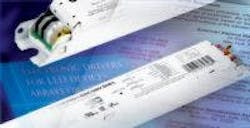FOCUS ON: Robust LED drivers are critical to enabling quality solid-state lighting
This compilation of some of our most-read articles offers a primer on LED drivers; addresses general concerns in driving LED lamps; highlights challenges to component selection and integration in lighting products and applications; and explores driver standardization efforts that will aid developers and manufacturers in furthering the adoption of LED-based lighting.
Much debate has occurred over what is the most critical factor in producing uniform, quality light output from solid-state lighting (SSL) products. Driver electronics are certainly key to enabling smooth flicker-free dimming, handling high-flux-output systems, and producing light with uniform intensity and color temperature. Some of our most-read articles offer a primer on LED drivers; address general concerns in driving LED lamps; highlight challenges to component selection and integration in lighting products and applications; and explore driver standardization efforts that will aid developers and manufacturers in furthering the adoption of LED-based lighting.
As engineers become more familiar with LEDs, they will also need to also familiarize themselves with another component of the LED system that is getting less attention — the LED driver. Craig DiLouie of the Lighting Controls Association explains.
LEDs are semiconductors with light-emitting junctions designed to use low-voltage, constant-current DC power to produce light. LEDs have polarity and, therefore, current only flows in one direction. Driving LEDs is relatively simple and, unlike fluorescent or discharge lamps, they do not require an ignition voltage to start. Too little current and voltage will result in little or no light, and too much current and voltage can damage the light-emitting junction of the LED.
As part of the LED driver selection process, it behooves a lighting product developer, or even a professional lighting designer/specifier, to understand concepts such as the choice of current- and voltage-based drive, the process of matching drivers to LED circuit topologies, dimming and flicker considerations, and when/why to opt for multiple outputs.
Replacing traditional incandescent and fluorescent lights with more efficient and longer-lasting LED-based SSL is an undeniable trend. However, since SSL fixtures are directly connected to the AC line, like with legacy lighting, there is a risk that 100-Hz or 120-Hz flicker could occur as a result of driving current ripple at the supply's output. Careful LED driver design can minimize flicker and help ensure that SSL delivers on its energy-efficiency promise through broad deployment.
There is an enormous potential market for LED-based retrofit alternatives for legacy MR16 bulbs. But the varied electronic and magnetic transformers used to drive the halogen incandescent filaments in the legacy lamps aren’t a good match for LEDs. For lamp makers to deliver drop-in SSL replacement lamps, energy savings, and long life, the lamp designers will have to develop a universal driver circuit.
The first LED lighting test standard (IES LM-79) was published in 2008 and since then, many related standard documents focused on testing have been developed or are currently in development by the IES, ANSI, UL, and NEMA. But the driver electronics in an SSL product has been one area that lacked an accepted testing standard. Now ANSI has developed a standard for testing drivers that should allow SSL product developers to more accurately compare and specify drivers, ensuring robust system-level reliability and performance.
Bookmark our Drivers & Electronics topic center and for more news and feature updates on this topic.
